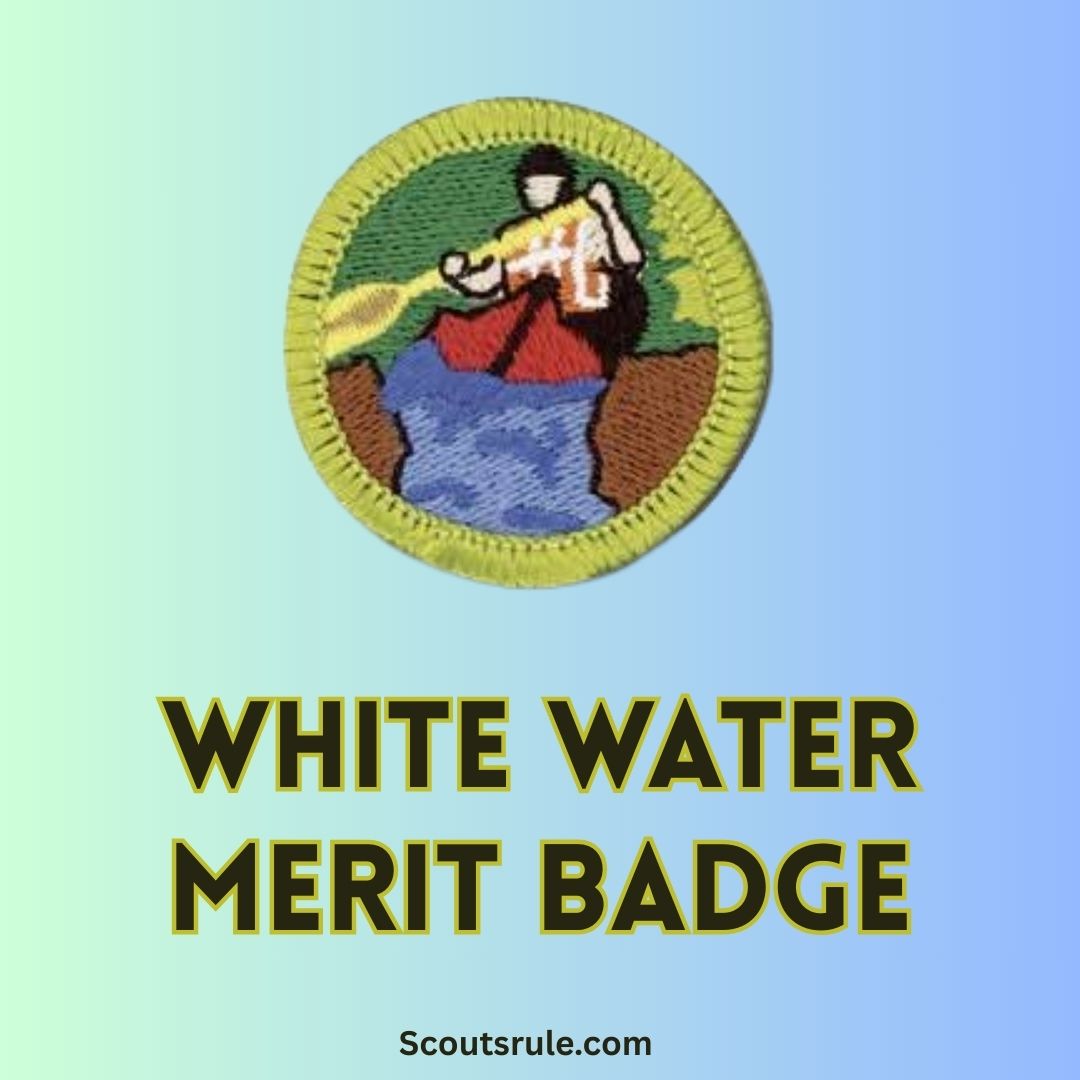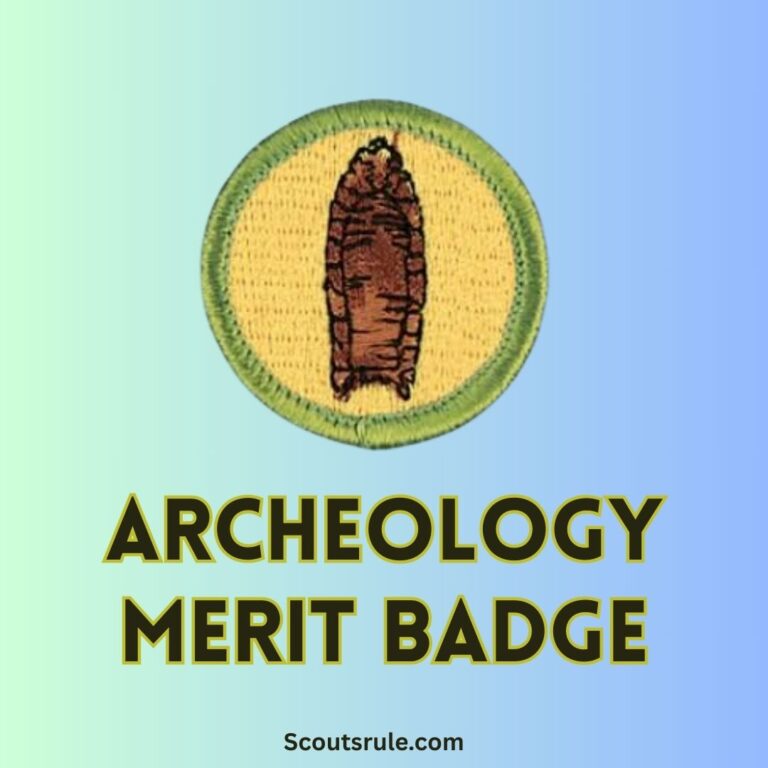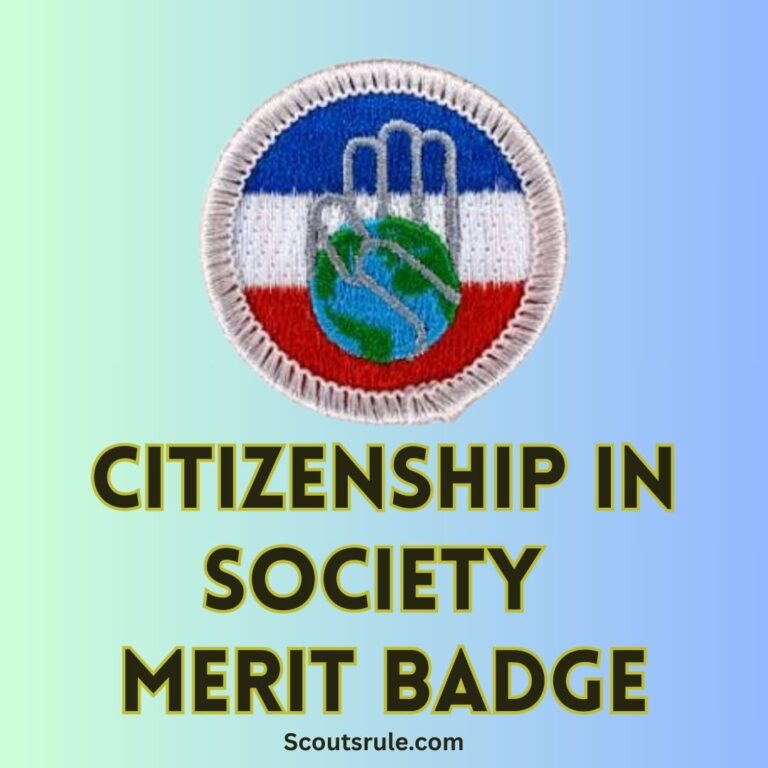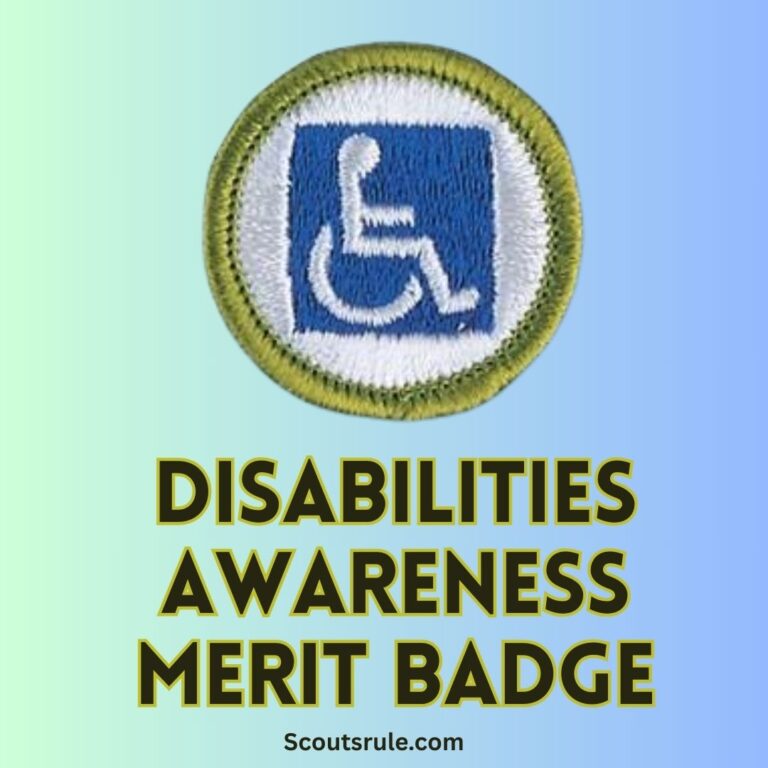
The Whitewater Merit Badge is an exciting opportunity for scouts to learn the skills and safety measures required to navigate fast-moving rivers. This badge focuses on paddling techniques, teamwork, and understanding river dynamics, making it ideal for those who enjoy water-based adventures. By earning this badge, scouts gain confidence, improve their decision-making abilities, and develop a deeper appreciation for the natural environment.
Post Contents
- Requirements for the Whitewater Merit Badge
- Tips for Earning the Whitewater Merit Badge
- Fun Facts About Whitewater
- Whitewater Merit Badge Requirements: A Comprehensive Guide
- Understanding Whitewater Hazards
- Injuries and Illnesses in Whitewater Activities
- Understanding the Scouting America Safety Afloat Policy
- Understanding the American Whitewater Safety Code
- Understanding and Drawing River Features
- How Waves Form, Including Standing Waves and Wave Trains
- Tilting or Edging the Boat Without Leaning Your Body
- Scouting a River and Deciding When to Portage
- Canoeing or Kayaking First?
- Conclusion
- Whitewater Merit Badge FAQs
Requirements for the Whitewater Merit Badge
1. Safety First
Understanding Hazards:
Scouts must identify potential dangers in whitewater environments, such as:
- Strainers: Branches or trees in the water that can trap paddlers.
- Hydraulics: Strong currents over ledges or lowhead dams.
- Cold Water: Risks of hypothermia and cold-water shock.
- Weather Conditions: Thunderstorms, strong winds, and low visibility.
Prevention and Response:
- Wear appropriate safety gear, including helmets and personal flotation devices (PFDs).
- Learn how to anticipate and mitigate risks.
- Practice first aid for injuries like cuts, bruises, and submersion incidents.
2. Equipment Knowledge
Scouts must familiarize themselves with the gear used in whitewater activities, including:
- Canoes and Kayaks: Understand the differences and choose the right vessel for the activity.
- Paddles: Learn proper grip and paddling techniques.
- Safety Gear: Helmets, PFDs, throw ropes, and rescue equipment.
3. River Dynamics
Reading the River:
Scouts must learn to identify features like eddies, rapids, and currents. Understanding these elements helps paddlers navigate safely and efficiently.
Spotting Hazards:
Recognize obstacles such as rocks, strainers, and undercut banks.
4. Paddling Techniques
Scouts must demonstrate proficiency in paddling skills, including:
- Forward Stroke: For propulsion.
- Back Stroke: For slowing down or reversing.
- Draw Stroke: For moving sideways.
- Sweep Stroke: For turning the vessel.
5. Teamwork and Communication
Whitewater activities require effective teamwork. Scouts must:
- Learn hand signals and verbal commands for communication on the water.
- Practice coordinating with paddling partners to navigate obstacles.
6. Rescue Techniques
Scouts must understand and practice rescue methods, including:
- Self-Rescue: Techniques for re-entering a capsized vessel.
- Assisted Rescue: Helping others in the water using throw ropes or towing.
- Emergency Procedures: Responding to accidents and ensuring everyone’s safety.
7. Whitewater Trips
Scouts must participate in at least two whitewater trips, applying their skills in real-world conditions. These trips should include:
- Navigating Class I and II rapids.
- Practicing safety drills and teamwork.
- Reflecting on the experience to identify areas for improvement.
Tips for Earning the Whitewater Merit Badge
- Practice Regularly: Spend time on the water to build confidence and improve skills.
- Learn from Experts: Work with experienced paddlers or instructors to refine techniques.
- Stay Fit: Physical fitness enhances paddling endurance and strength.
- Respect Nature: Follow Leave No Trace principles to minimize environmental impact.
Fun Facts About Whitewater
- Classification System: Rapids are classified from Class I (easy) to Class VI (extremely dangerous).
- Origins of Kayaking: Kayaks were originally used by Arctic hunters for transportation and fishing.
- Teamwork is Key: Successful navigation of whitewater rapids relies heavily on communication and coordination.
Whitewater Merit Badge Requirements: A Comprehensive Guide
Understanding Whitewater Hazards
Whitewater activities come with unique challenges and risks. Scouts must identify and understand common hazards to stay safe:
1. Branches and Trees in Water:
- Known as “strainers,” these obstacles can trap paddlers or cause capsizing.
- Avoid areas with visible debris and always scout the river beforehand.
2. Rocks:
- Rocks create turbulence, standing waves, and obstacles.
- Learn to identify submerged rocks and navigate around them.
3. Hydraulics Over Ledges or Low-Head Dams:
- Hydraulics cause powerful currents that can hold a boat underwater.
- Portage (carry your boat around) dangerous areas to avoid these hazards.
4. Strong Wind:
- Winds can alter water currents and make paddling difficult.
- Pay attention to weather forecasts before heading out.
5. Low Water or Air Temperature:
- Cold conditions increase the risk of hypothermia or cold-water shock.
- Wear appropriate gear, like wet suits or dry suits, to stay warm.
6. Thunder and Lightning Storms:
- Avoid being on the water during storms due to the risk of lightning strikes.
- Seek shelter immediately if you hear thunder or see lightning.
Injuries and Illnesses in Whitewater Activities
Whitewater activities can cause various injuries and illnesses. Scouts should be prepared to prevent, recognize, and respond:
1. Cold-Water Shock:
- Sudden immersion in cold water can cause gasping and panic.
- Wear thermal protection and practice controlled breathing techniques.
2. Hypothermia:
- Prolonged exposure to cold water can lower body temperature dangerously.
- Ensure proper clothing and know the symptoms (shivering, confusion, etc.).
3. Head, Neck, and Back Injuries:
- Collisions with obstacles can cause serious injuries.
- Wear helmets and avoid high-risk areas when possible.
4. Heat-Related Illnesses:
- Overexertion in warm weather can lead to heat exhaustion or stroke.
- Stay hydrated and take breaks to cool down.
5. Sunburn:
- Prolonged exposure to the sun can damage skin.
- Use sunscreen and wear protective clothing.
6. Dehydration:
- Physical activity and sun exposure can lead to dehydration.
- Drink plenty of water and monitor for signs of fatigue or dizziness.
7. Blisters:
- Repeated friction from paddles can cause blisters.
- Use gloves or improve grip technique to prevent them.
8. Bruises and Cuts:
- Occur during contact with rocks or debris.
- Carry a first aid kit for immediate treatment.
9. Sprains and Strains:
- Caused by improper lifting or sudden movements.
- Stretch beforehand and practice proper techniques.
10. Shoulder Dislocation:
- Incorrect paddling techniques can strain shoulders.
- Learn how to paddle effectively and avoid overexertion.
11. Submersion Injuries:
- Result from prolonged underwater exposure.
- Practice self-rescue techniques and know emergency procedures.
Understanding the Scouting America Safety Afloat Policy
The Safety Afloat Policy provides guidelines to ensure safe water activities:
- Wear life jackets at all times.
- Check weather conditions and river classifications.
- Ensure proper supervision and training for all participants.
Understanding the American Whitewater Safety Code
The Whitewater Safety Code emphasizes:
- Preparedness: Know your route and potential hazards.
- Gear: Use appropriate safety equipment.
- Respect: Avoid reckless behavior and be considerate of others on the river.
- Skill Development: Continuously improve paddling and rescue techniques.
Understanding and Drawing River Features
Scouts must identify key river features that affect navigation:
1. Upstream V: Indicates obstacles where water flows around. Navigate carefully.
2. Downstream V: Shows clear paths for smooth paddling. Aim for the center.
3. Riffle: Shallow, fast-moving water with small ripples.
4. Eddy with an Eddy Line: Calm areas behind obstacles, with swirling currents at the edge. Ideal for resting.
5. Ledge: Sudden drop in the riverbed causing turbulence.
6. River Bend: Sharp turns in the river requiring quick navigation.
7. Shallows: Areas of shallow water where boats may scrape the bottom.
8. Current at Different Depths: Understand how surface and deep currents differ.
9. Drop: A vertical or near-vertical fall in the water.
10. Horizon Line: Marks the edge of unseen drops or obstacles.
11. Hydraulic: Powerful circular currents caused by obstacles like rocks or dams.
How Waves Form, Including Standing Waves and Wave Trains
1. Standing Waves:
- Created when water flows over an obstacle. They appear stationary and are great for practicing paddling techniques.
2. Wave Trains:
- A series of consecutive waves caused by sustained turbulence. Scouts must learn to navigate through or around them.
Tilting or Edging the Boat Without Leaning Your Body
Scouts must master tilting or edging techniques to maneuver effectively:
1. Entering and Exiting an Eddy:
- Lean into the current with your paddle to move smoothly.
2. Ferrying in Downstream and Upstream Directions: - Use angled strokes to cross currents without being swept downstream.
Scouting a River and Deciding When to Portage
1. When to Scout a River:
- Scout before navigating unfamiliar routes or challenging rapids.
2. Why Scouting is Important:
- It ensures safe navigation and avoids hidden hazards.
3. How to Scout While Ashore:
- Walk along the riverbank, observing features and potential dangers.
4. How to Scout While on the River:
- Use slow paddling to examine obstacles and choose safe paths.
5. When to Portage:
- Portage when rapids are beyond skill level or pose significant risks.
Canoeing or Kayaking First?
Scouts can choose between two types of vessels for the Whitewater Merit Badge:
1. Using a Canoe for the Whitewater Merit Badge:
- Offers stability and space for gear. Ideal for beginners learning basic techniques.
2. Using a Kayak for the Whitewater Merit Badge:
- Provides greater maneuverability and speed. Suited for more advanced paddling skills.
Conclusion
The Whitewater Merit Badge is a thrilling and rewarding experience that combines adventure with skill-building. By completing the requirements, scouts gain valuable knowledge about river safety, paddling techniques, and teamwork. This badge not only prepares scouts for future water-based activities but also instills a sense of accomplishment and respect for the natural world. Ready to take on the rapids? Let the adventure begin! 🌊🚣♂️✨
Whitewater Merit Badge FAQs
1. Who can earn the Whitewater Merit Badge?
Any registered Scout in the Boy Scouts of America who meets the prerequisites and requirements can earn the Whitewater Merit Badge.
2. Do I need any prior experience in canoeing or kayaking?
Yes. Scouts must first earn the Canoeing or Kayaking Merit Badge before starting the Whitewater Merit Badge.
3. What safety precautions should I follow while participating in whitewater activities?
Scouts must wear a properly fitted U.S. Coast Guard-approved life jacket, a helmet, and appropriate footwear. They must also be aware of river hazards, understand swift-water rescue techniques, and follow all safety guidelines.
4. What types of boats will I use for this merit badge?
Scouts will use either a canoe or kayak designed for whitewater conditions. The choice depends on the course or counselor’s guidance.
5. What are the key skills I will learn?
Scouts will learn whitewater paddling techniques, river navigation, hazard recognition, rescue skills, and how to read river conditions like eddies, currents, and rapids.
6. How long does it take to complete this badge?
The duration varies depending on access to whitewater conditions and the time required to learn the necessary skills. Some Scouts complete it in a few weekends, while others may take longer.
7. Where can I complete the on-the-water requirements?
Scouts must complete their paddling and rescue exercises on a river with Class I or higher rapids. Your counselor will help identify suitable locations.
8. Do I need to provide my own equipment?
While some camps and outfitters provide necessary gear, Scouts should check with their troop or counselor about what equipment is needed.
9. What is the difference between Class I, II, and III rapids?
- Class I: Easy, small waves with little obstruction.
- Class II: Moderate rapids with clear channels and some maneuvering required.
- Class III: Stronger rapids with irregular waves, requiring precise control.
10. Do I need to demonstrate a rescue or safety skill?
Yes. Scouts must demonstrate self-rescue techniques, as well as assist in a boat-over-boat rescue and throw rope rescue.
11. Can I take this merit badge at a summer camp?
Some summer camps offer Whitewater Merit Badge programs in locations with suitable river conditions. Check with your camp ahead of time.
12. What are the benefits of earning this merit badge?
Scouts gain confidence in their paddling skills, learn important safety techniques, and experience the excitement of whitewater sports, which can lead to lifelong outdoor adventure opportunities.
13. Can I earn this merit badge in a group?
Yes! Whitewater activities are often safer and more fun when done in a group under the supervision of a trained counselor.
14. What happens after I complete all the requirements?
Once all requirements are met, your merit badge counselor will review your skills, sign off on your progress, and you can submit your completed Blue Card to your Scoutmaster for final approval and recognition.

Hi, Robin here, A former lead Scout and here I share my inspiring stories about USA Scouts, leadership, adventure, how to guides and more.






